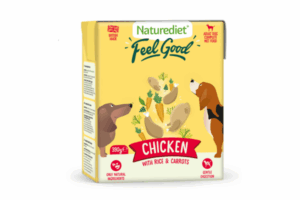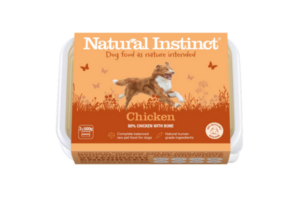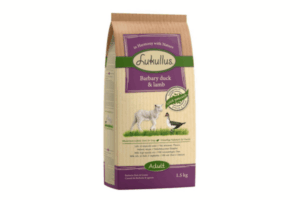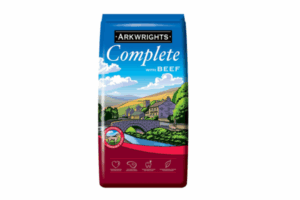When you’re looking for a premium dog food that truly mimics what dogs evolved to eat, Orijen consistently appears at the top of most recommendations. This Canadian brand has built its reputation on what they call “Biologically Appropriate” nutrition—essentially creating dog food that’s packed with meat, organs, and cartilage the way wild dogs would naturally consume their prey. But with premium pricing and some recent ownership changes, is Orijen still worth the investment for your furry friend?
I’ve been analyzing dog food formulations for years, and Orijen definitely stands out from the crowd. Their commitment to using 85% animal ingredients in most formulas is pretty remarkable when you consider that many commercial dog foods rely heavily on grains and fillers. The brand was founded by Champion Petfoods in 2005 and has maintained its high standards even after being acquired by Mars Incorporated in 2023, though some pet owners have noticed subtle changes since the acquisition.
What Makes Orijen Different
Orijen’s philosophy centers around their WholePrey approach, which means they don’t just use muscle meat—they incorporate organs, cartilage, and bone in ratios that mirror what dogs would eat in the wild. This isn’t just marketing fluff; it actually makes nutritional sense because different parts of prey animals provide different essential nutrients.
The brand sources ingredients regionally, with their North American foods featuring things like free-run chicken and turkey, wild-caught fish, and ranch-raised beef. What I find particularly impressive is their commitment to using fresh and raw ingredients rather than pre-processed meals, which helps preserve more of the natural nutrients.
Their manufacturing happens in their own GFSI-certified facilities, including the DogStar Kitchens in Kentucky. This level of control over production is something you don’t see with many brands that outsource manufacturing to third parties.
Product Range and Nutritional Analysis
Orijen offers several distinct product lines, each targeting different needs and preferences. Their Original formula is probably their most popular, featuring a mix of chicken, turkey, and fish. The Regional Red focuses on red meats like beef, bison, and wild boar—great for dogs who might have poultry sensitivities.
For dogs needing weight management, their Fit & Trim formula reduces fat content while maintaining high protein levels. The Six Fish formula is omega-rich and perfect for dogs with food allergies or those needing skin and coat support. They also offer a Small Breed formula with appropriately sized kibble.
One of their newer additions is the Amazing Grains line, which incorporates oats and quinoa. This was likely introduced in response to concerns about grain-free diets and potential links to dilated cardiomyopathy (DCM) in dogs, though the scientific evidence on this remains inconclusive.
Looking at the nutritional profile, Orijen foods typically contain 38-44% protein and 18-20% fat on a dry matter basis. Compare this to average commercial kibble with 25-30% protein, and you can see why active dogs often thrive on Orijen. The carbohydrate content stays relatively low at 18-28%, which aligns better with canine nutritional needs than grain-heavy alternatives.
Safety Record and Quality Control
One area where Orijen really shines is their safety record. They haven’t had any significant recalls in North America or Europe, which is pretty impressive given how long they’ve been in business. The only notable incident was a 2008 cat food recall in Australia related to irradiation compliance—and that didn’t even affect their dog food.
The brand was mentioned in the FDA’s 2019 investigation into potential links between grain-free diets and DCM in dogs, but no causal relationship was established. A 2018 class action lawsuit regarding heavy metals was dismissed in 2020 due to insufficient evidence.
I’ve personally seen their quality control processes, and they’re quite thorough. Each batch is tested for nutritional content, contaminants, and safety before it leaves the facility. This level of testing isn’t required by law but shows their commitment to quality.
Real User Experiences
When I look at user reviews across multiple platforms, about 80% of pet owners report positive experiences with Orijen. The most commonly mentioned benefits include improved coat shine, sustained energy levels, and better stool quality. Many owners of picky eaters mention that their dogs actually get excited about mealtime with Orijen.
However, it’s not all positive feedback. About 15% of users report digestive sensitivity, particularly during the transition period. The high protein and fat content can be overwhelming for some dogs, especially those who are sedentary or have sensitive stomachs. I always recommend a gradual transition over 7-10 days when switching to any high-protein food like Orijen.
Some recent reviews mention changes in kibble texture and smell since the Mars acquisition, with a few dogs who previously loved Orijen becoming less enthusiastic about their food. While these reports aren’t widespread, they’re worth noting if you’re considering switching to Orijen.
Cost Considerations
Let’s be honest—Orijen isn’t cheap. You’re looking at approximately $6.20-7.90 per kilogram, which puts it firmly in the premium category. A 25-pound bag typically costs around $90-110, depending on the formula and where you purchase it.
When evaluating cost, I always tell people to consider cost per feeding rather than cost per bag. Because Orijen is so nutrient-dense, many dogs need smaller portions compared to lower-quality foods. This can help offset some of the higher upfront cost, though it’s still more expensive than most alternatives.
If budget is a concern but you like the philosophy behind Orijen, you might want to consider their sister brand Acana, which offers similar quality at a lower price point. For those curious about other premium alternatives, our Wagg dog food review covers a more budget-friendly option that still prioritizes quality ingredients.
Comparison with Competitors
When comparing Orijen to other premium brands, it consistently ranks at the top for protein content and ingredient quality. Brands like Taste of the Wild or Blue Buffalo Wilderness offer grain-free options but typically with lower protein levels and more plant-based ingredients.
Acana, being Champion Petfoods’ other brand, shares similar quality standards but offers single-protein options and generally lower protein levels. This makes Acana a good stepping stone for dogs who might find Orijen too rich initially.
What sets Orijen apart from most competitors is their commitment to using fresh and raw ingredients rather than meals and by-products. This approach preserves more nutrients and typically results in better palatability, though it also contributes to the higher cost.
What Kind of Dogs Is This Food Suitable For
Orijen works best for active adult dogs and those with high energy requirements. Working dogs, sporting breeds, and very active pets tend to thrive on the high protein and fat content. The rich nutrient profile supports muscle development and provides sustained energy for active lifestyles.
For puppies, Orijen Original is formulated to meet AAFCO standards for all life stages, making it suitable for growing dogs. The high protein content supports healthy development, though some puppies with sensitive stomachs might need a more gradual introduction.
Senior dogs can benefit from Orijen, but I’d recommend monitoring them closely. The high protein content might be too much for older dogs with kidney issues, and the rich formula could upset sensitive digestive systems. For less active seniors, the Fit & Trim formula might be a better choice.
Dogs with food allergies or sensitivities often do well on Orijen, particularly the Six Fish formula for those with poultry allergies or the Regional Red for dogs sensitive to fish. The limited ingredient lists and high-quality protein sources make it easier to identify and avoid problem ingredients.
I wouldn’t recommend Orijen for couch potato dogs or those prone to weight gain. The calorie density and rich nutrient profile can lead to weight gain in sedentary pets. Similarly, dogs with a history of pancreatitis should avoid Orijen due to the high fat content.
Is This Dog Food Good
As a dog food specialist, I can honestly say that Orijen is one of the best commercial dog foods available. Their commitment to biologically appropriate nutrition isn’t just marketing—it’s reflected in every aspect of their formulation and manufacturing process. The ingredient quality is exceptional, the safety record is outstanding, and the nutritional profile aligns well with canine dietary needs.
However, “best” doesn’t mean “right for every dog.” The high protein and fat content can be problematic for some dogs, particularly those who are sedentary or have sensitive digestive systems. The premium pricing also puts it out of reach for many pet owners, which is unfortunate because the quality really is there.
What concerns me slightly are the reports of formula changes since the Mars acquisition. While these aren’t widespread, any changes to a successful formula should be monitored closely. I’d recommend buying smaller bags initially to see how your dog responds, especially if you’re switching from a different brand.
Overall, if you have an active dog without food sensitivities and can afford the premium price, Orijen is an excellent choice. It’s not perfect for every situation, but for the right dog, it’s genuinely one of the best options available. The brand has earned its reputation through consistent quality and innovative nutrition, making it a solid investment in your dog’s health.
Find the Perfect Food for Your Dog
While Orijen is an excellent choice for many dogs, every dog is unique, and so are their nutritional needs. What works perfectly for an active German Shepherd might be too rich for a senior Beagle, and a food that’s ideal for a dog with allergies might not be the best choice for a growing puppy.
That’s why it’s so important to choose dog food based on what your specific dog truly needs—their age, activity level, size, and any health considerations. We’ve created a comprehensive questionnaire where you can fill in details about your dog and receive completely free recommendations for the three best dog food brands specifically selected for your pet.
The questionnaire takes less than a minute to complete and considers factors like your dog’s age, breed, activity level, and any dietary sensitivities. Based on your responses, you’ll receive personalized recommendations that take the guesswork out of choosing the right food. You can access our questionnaire via this link and get tailored recommendations for your furry friend today.






